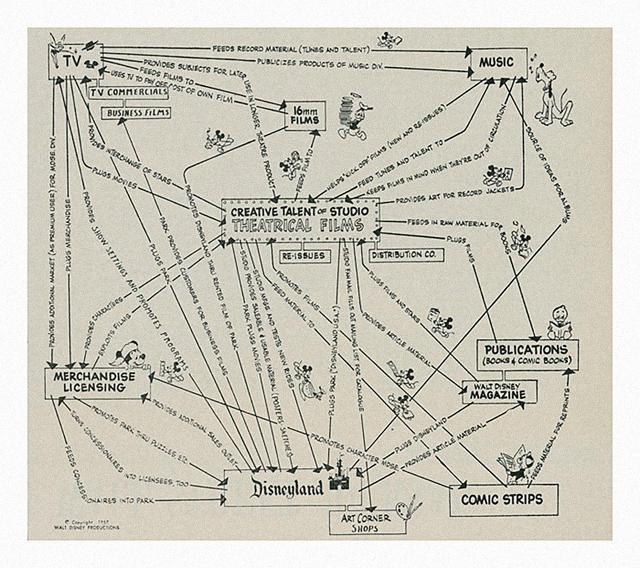
Digital Transformation Stories: Disney
Disney+ launched Nov 2019 by the animation giant is one of the latest examples of digitally transforming a business to embrace emerging tech and create memorable customer experiences. Studying their case can serve as an inspiration to many companies.
The digital transformation of an organization is its reinvention through the infinite and increasing possibilities technology offers. However, the key to this process is not technology or digitalisation itself. When we talk about digital transformation, the key lies in transformation or reinvention.
It is a matter of rethinking the way we ad value to the final user, starting with optimizing the operational processes with the use of analytics and artificial intelligence in order to create memorable experiences for those users and consistencies through all the touch points. It is a process that accelerated especially from the popularization of the smartphone in 2007 and that now is impacting all business sectors.
Let's just think about what is the alternative to digital transformation for an organization. What do we stick to if we don't reinvent ourselves? What if we kept betting on the same thing that has worked for the past 5, 10, 20 years?
The great risk of not joining this wave of change is that the new digital-native entrants generate a disruption in your own sector that dramatically reduces our market share. Porter already told us in 1979 that the threat of new entrants to an industry was a major factor. Today it is more so than ever, since it is the new digital-native entrants that are generating the fastest acceleration ever seen in all sectors. This is the case of Amazon in retail, Apple in mobile phones, Uber in the taxi, AirBNB in hotels, and what may be the next biggest disruption, Tesla, in this case in the automotive sector.
But we were talking about Disney. This animation giant has recently entered the streaming business competing with Netflix. How is this movement understood? What need does this historic company have to enter this new business? First we must understand Disney's business model.
How does Disney generate value? Seeing Disney as an almost perfect money-making machine is far less romantic than the organization's classic vision of a "dream factory." Without denying the latter, the definition is very true to reality, in my opinion. The generation of value in this case goes through the creation of brands and especially by a masterful exploitation of them:
- Disney builds brands around their characters and stories. Cinemas and entertainment platforms pay to stream the movies.
- The next step is to offer licensing rights that allow manufacturers to use Disney characters in consumer products.
- Creation of experiences in theme parks. In them, all the attractions and products you can buy are based on Disney brands.
- Gain greater presence through media control: Disney owns ABC television network and the cable company ESPN
- Direct access to fans through their own stores: the Disney Stores, where the brand's products are sold.
So Disney's business is not so much about making movies, but about creating and exploiting brands. It is a practically perfect marketing machine. Why has Disney bought the brands Pixar, Marvel, Star Wars,...? Because there is no organization that is as good as Disney at exploiting and ultimately increasing the value of a brand. It is a marketing machine perfectly designed to create value around a story. As an example, we have the following diagram from the Disney Archives, dated 1957. Let's look at how Walt Disney designed and planned how each of the pieces of the Disney marketing machine fit together. One could almost say that Walt Disney was a true precursor to the Business Model Canvas!

Contrary to common belief, most of Disney's sales don't come from movies. For years, the company's unit generating the most revenue has been Media Networks, and specifically ESPN subscriptions.

The problem is that the Media Networks unit has been recording revenue declines for years, due in large part to a lower ESPN audience. If ESPN had 100M subscribers in 2011, six years later went down to 87M households subscribed. Additionally, ESPN's average audience fell 7% and 11% yoy in 2015 and 2016, respectively, according to Forbes. In turn, this decline in audience is impacting ESPN's advertising revenue.
The cause of this setback can be likely found in the consumer shift toward new alternatives for streamed content, stepping away from expensive TV subscriptions with no personalized options. We clearly see the effect of new digital-native entrants in a consolidated industry like entertainment, and in a company with almost 100+ years of history like Disney. They now own their own streaming platform, competing with rivals like Netflix, Amazon Prime, and arguably Hulu (Disney shares ownership with Comcast/NBC).


Now that we have understood Disney's business model and how it is being threatened by new digital entrants, the movement of Disney is better understood, that is, the creation of a streaming platform that can compete directly with Netflix.
Disney + has had instant success. I think it may be an example of the type of digital transformation that many traditional brands can do. The use of its immense brand power has made it possible to quickly adapt to the digital landscape of the 21st century, dragging an entire legion of fans towards a type of platform they have already become accustomed to. The company has quickly adapted to new consumer habits and is thus able to compete with industry disruptors. More than resist under schemes of the s. XX, has adapted in record time.
The steps Disney can take from now on would be to advance customization as it continues with the digital transformation. Now that they own not only digital content but also a modern platform, they are able to access user data. We can expect Disney to look for new ways to increase the value of its brands through the use of data to make personalized recommendations for each viewer.
Disney + instantly launched to compete at the same level with the disruptors of its own market. It is a sample of how a company can adapt to the new times. Traditional brands can see Disney as an example in digital transformation. Following their footsteps is the best way to remain relevant and continue to grow in the age of digitization, which has only just begun.









